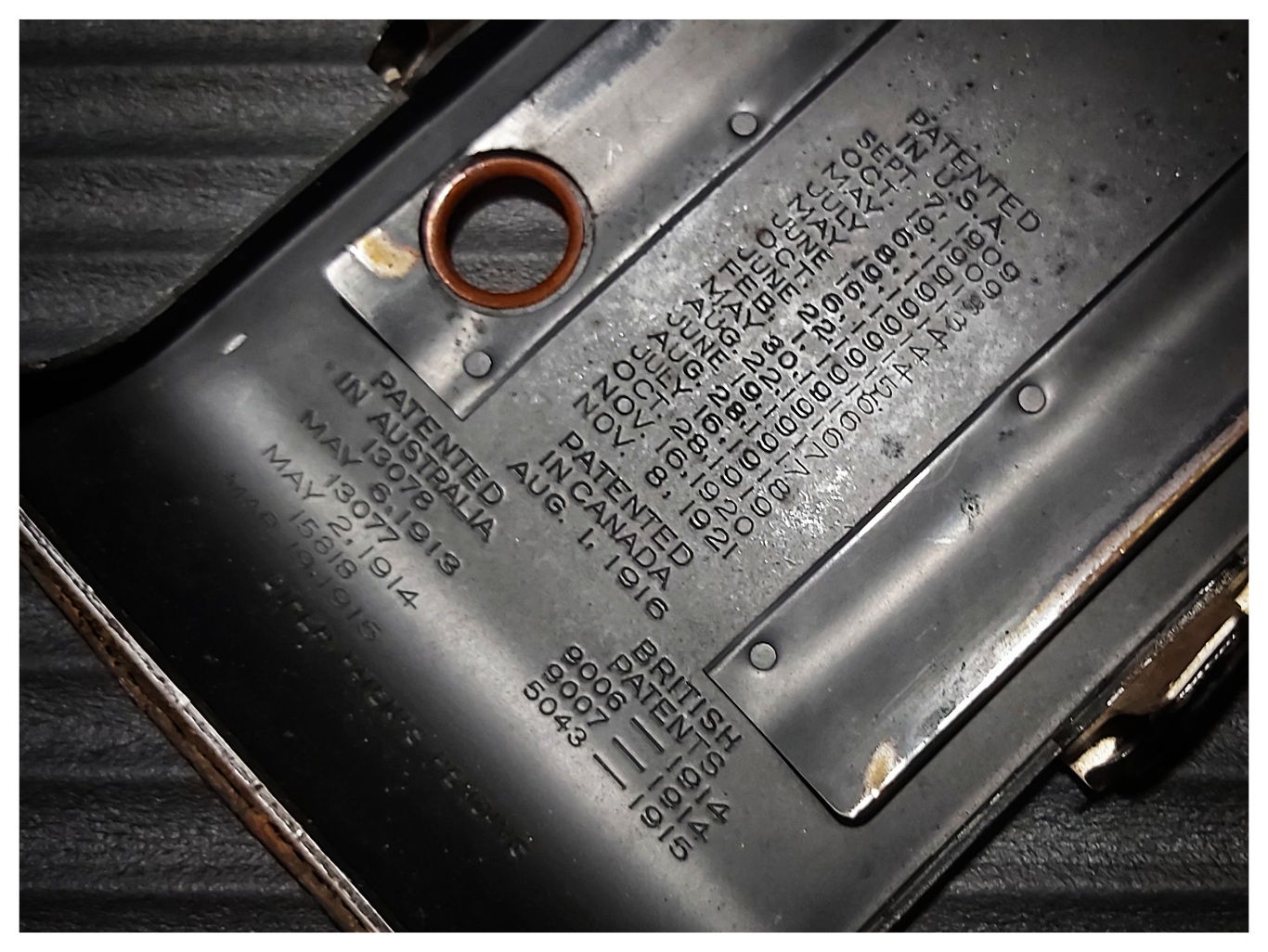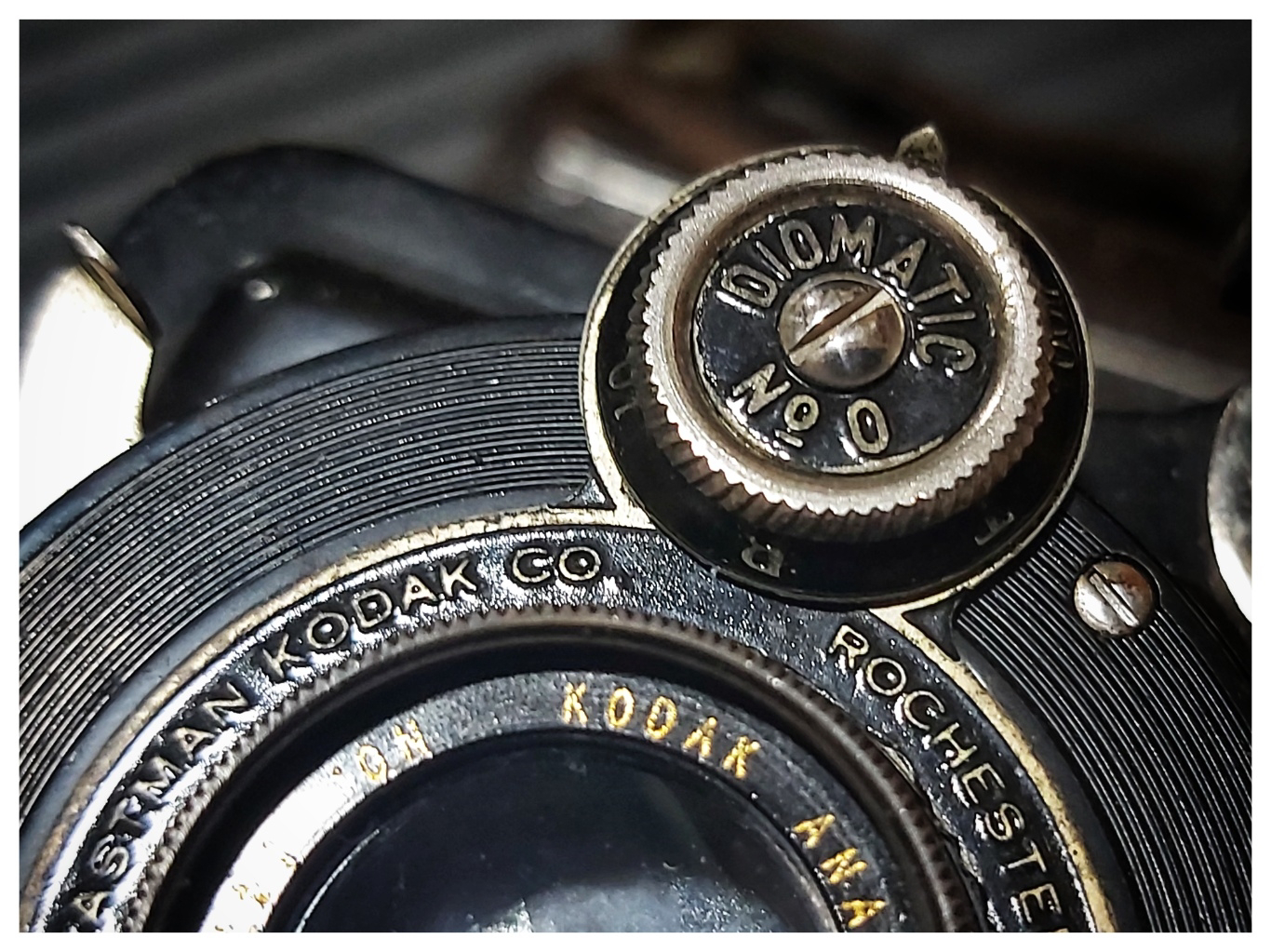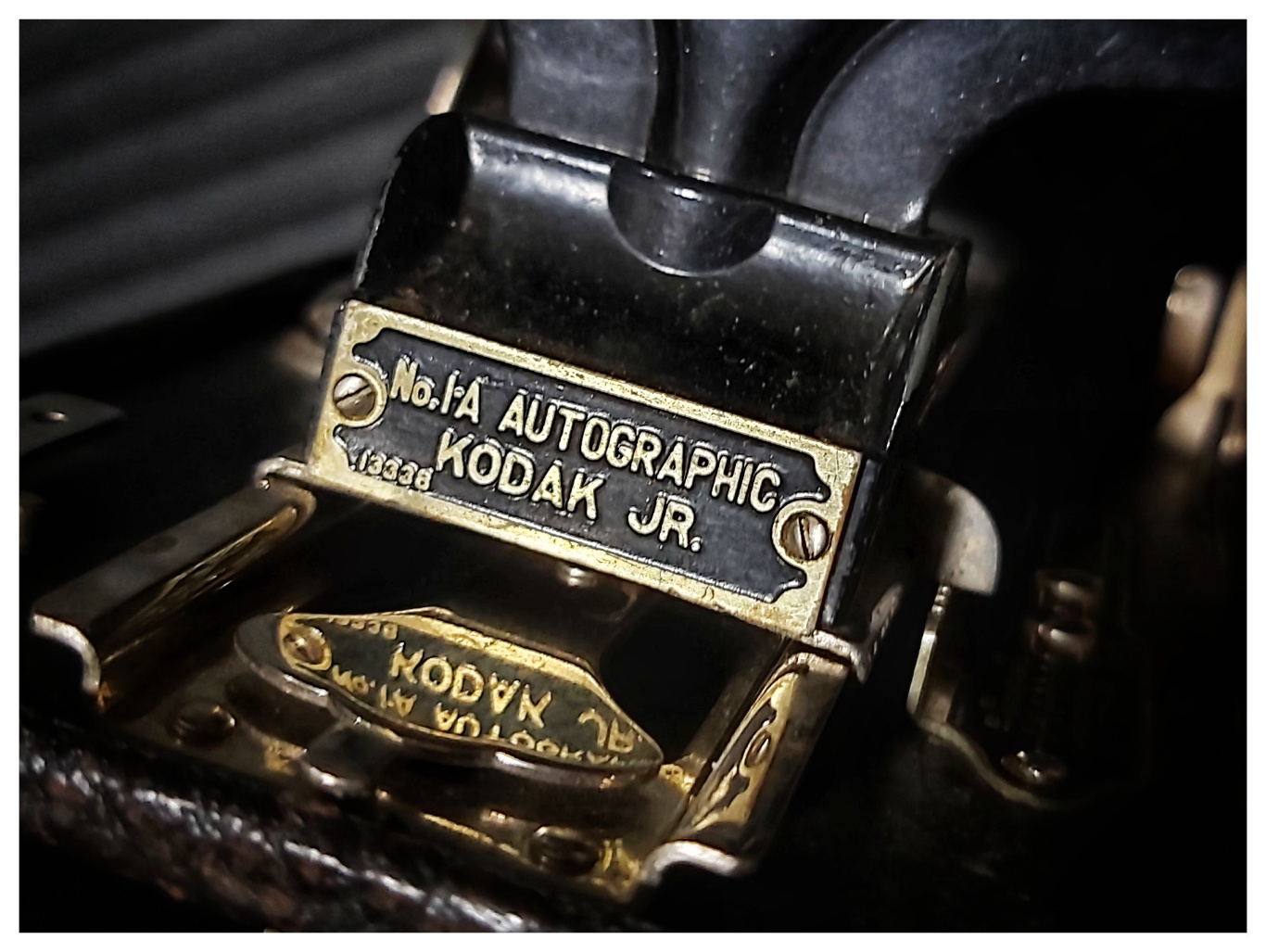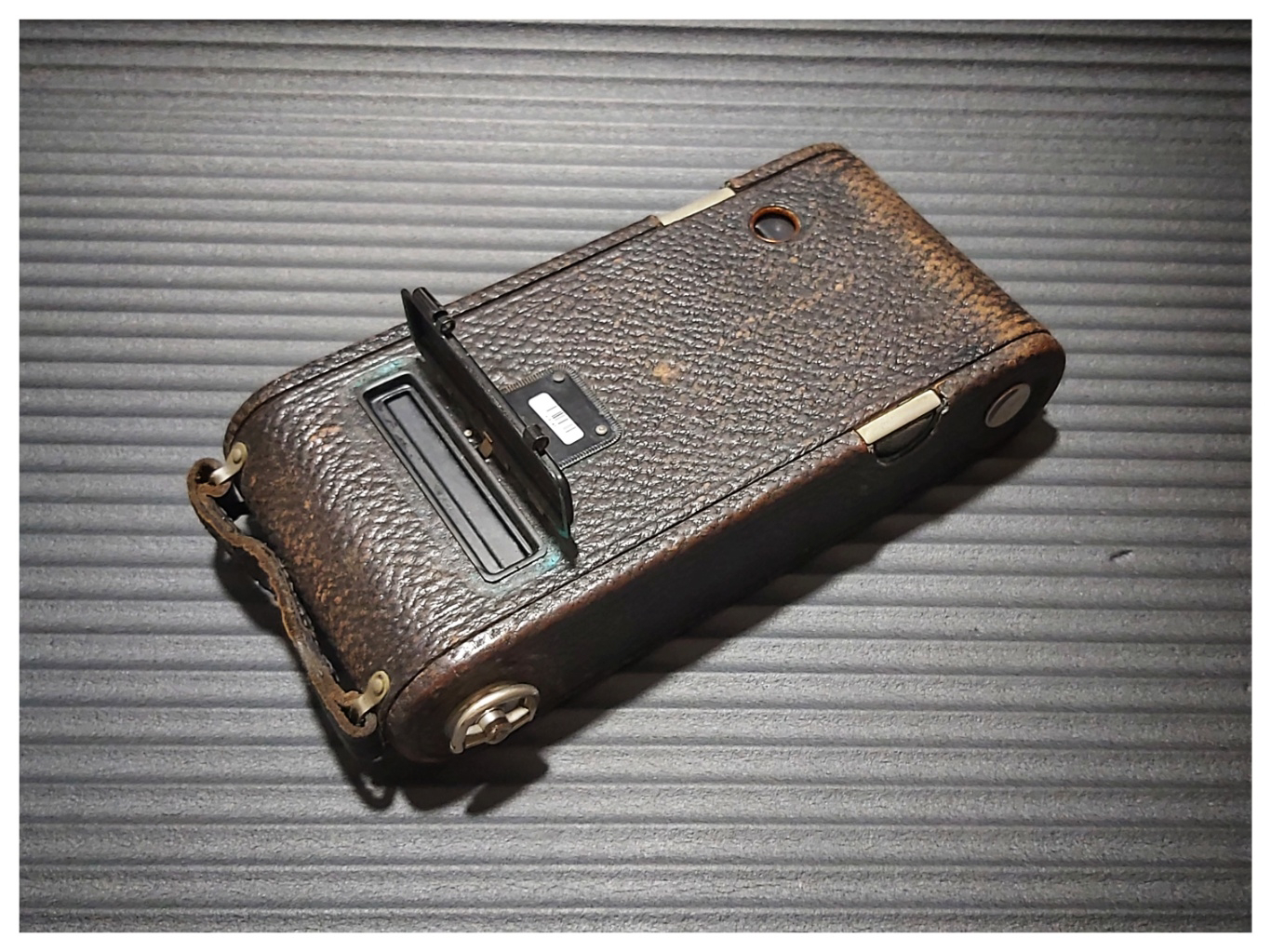The Kodak 1A Autographic Jr: Bringing a nearly 100-year-old medium format camera back to life, 17 November 2023
The Kodak 1A Autographic Jr: Bringing a nearly 100-year-old medium format camera back to life, 17 November 2023
First launched around 1914, the Kodak 1A Autographic Jr was described in the 1915 Kodak catalogue as, 'a compact, reliable camera ... and so thin as to be pocketed without inconvenience.' I'm not sure what kind of pockets they used to have back in the day, but the 1A Autographic Jr is a beast. Measuring 20x10x4cm and weighing about 0.8kg, it was anything but pocketable by today's standards.
From it's launch in 1914 to when Kodak stopped production in 1927, about 800,000 units of the Kodak 1A Autographic Jr were produced. During that time it went through several variations of frontispiece — the lens, aperture and shutter assembly — but the overall body remained the same, with its bellows, removable back and the unique 'Autographic' feature that gives the 1A its name.
On the back of the camera is a little flap, and if this is lifted, below you can see the film plane. The Autographic cameras were equipped with a small stylus (mine has been lost over the years) and on the back of the film was a carbon paper layer that if you wrote on with the stylus (press down heavily it says in the manual) would imprint details onto the film, generally in the space between the frames. Thus you could annotate you films with a 'date stamp', or description.
Regarding the films used in the cameras, the 1A Autographic uses 116 film, which of course is no longer available. First introduced by Kodak in 1899, 116 film is 70mm wide, roughly 1 cm wider than 120 film, and produces 6.5×11cm negatives. On the flap on the back of my camera is embossed, 'use Autographic film no. A-116', which gave the same size pictures as 116 film but instead of paper the film was wound with a sheet of carbon paper and thinner red backing paper which allowed the user to write information on the back with the stylus. The A-116 film used in the 1A Autographic camera gave twelve exposures compared to eight exposures in the 1 series.
From what I can tell, my Autographic 1A is one of the later models in the series. It is fitted with a Diomatic shutter N°0, which was introduced to the Autographic 1A in 1925, and features shutter speeds of 1/10, 1/25, 1/50 and 1/100s plus B (bulb) and T (time). When you set a shutter speed, exposure is determined by the dial on the front underneath the lens. In the 1925 description of the camera it says, 'the correct speed ... for dull, gray, clear or brilliant light is indicated by a sliding scale which controls the diaphragm.' These criteria would have been set for Kodak orthochromatic film, which from what I can tell had a film speed of ISO 30-40. I'm hoping that modern films have enough latitude that sometime I can use this awesome little 'exposure meter'.
When I first saw Kodak 1A Autographic Jr on the Kamerastore website it was priced at an amazing 15€ and was in the 'Not passed' category, which was a sure sign that there was something wrong with it. From the image on the website you could see that some of the leather was peeling, and it was described as being in 'generally bad condition'. However, that has never put me off before, and it didn't defer me this time.
When the camera arrived, it certainly lived up to the description on the website. The leather was badly scuffed and was peeling in several places, the red window in the back of the camera was missing, which was highlighted on the website entry, and the back was firmly jammed onto the camera, which was not mentioned, but was normal for an 'untested, sold as-is' camera. Solving the issue of the jammed film back was quite straightforward. A small screwdriver was inserted into a gap between the back and the camera body and gentle pressure applied. The back moved slightly, then came apart from the body. Clipping it back on, the back now fits snugly in place. While the back was off, I took a quick look inside. Of course it was quite dirty, but apart from that, and the missing red window, it was in reasonably good condition.
When the front door was opened, the bellows came out quite easily. A quick check suggested they were in pretty good condition, but when I performed the lamp test later — shining a light through the bellows from inside the camera in the dark — they were anything but light tight, with a lilittle Christmas tree of pinholes visible in the dark. However, what was more pressing was that the shutter was sticking. On the left (looking from the back) is a cocking lever and to the right is the shutter lever. The shutter cocks fine, but when I fire the shutter it hesitates half open for a second or so before firing. I'm hoping that this sticky shutter is just some 100-year-old gunk that's making it stick and a bit of lighter fluid will get it firing again.
I had been thinking about what camera I'd like to use in the next #ShittyCameraChallenge, which is starting in December. Originally it was probably going to be the Agfa Billy-Clack, which of course I can still use in the Challenge, but now I hoping that I can get the Kodak 1A Autographic Jr, with its sticky shutter, no red window and pinhole-filled bellows, working again. If I can get it going it'll be awesome.
If you are on Mastodon, you can now follow this blog directly. Just go to Mastodon and follow my WordPress account at @keithdevereux.wordpress.com@keithdevereux.wordpress.com. All new posts will be automatically updated to your timeline on Mastodon.
#Kodak, #Autographic, #116Film, #Camera, #Bellows, #Experimental, #Film, #ShittyCameraChallenge, #FrugalFilmProject, #Retro, #Vintage, #ArtDeco,


















Comments
Post a Comment